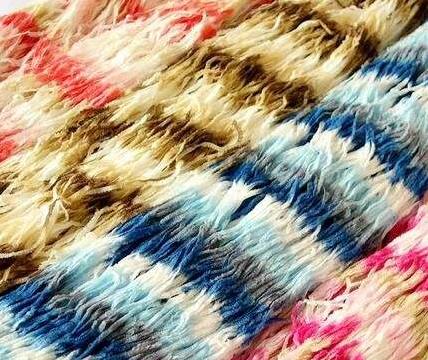The processing process of fancy yarn
Fancy yarn is a type of yarn that is processed through various methods such as strong twisting, overfeeding, color mixing, cutting, and pulling to obtain a unique appearance, color, feel, structure, and texture. It has strong personality and decorative effect, which can create various color effects on fabrics. There are currently several common types of fancy yarns.

(1) Strong Twisted Yarn: It can strengthen the twisting of pure cotton yarn, viscose yarn, wool yarn, as well as various synthetic filament yarns, short fiber yarns, etc., and shape them through certain means. Knitted fabrics woven with this strong twisted yarn can have a hemp like texture and crease effect.
(2) Special shaped fancy yarns: such as bamboo yarn, big belly yarn, caterpillar yarn, knot yarn, wavy yarn, bead loop yarn, braid yarn, towel yarn, chenille yarn, gold and silver silk thread, etc. They can be used to weave imitation linen fabrics, imitation wool fabrics, looped fabrics, velvet fabrics, tufted fabrics, etc., which can give the fabrics a strong sense of three dimensionality.
Article source: Fancy Thread Manufacturer
-
05-27
The reason why fabrics containing spandex are prone to yellowing
Spandex is a commonly used fiber variety in our daily lives, characterized by good elasticity, low fineness, high elastic modulus (cracking elongation can reach 400-800), and low specific gravity. Spa
-
04-24
Colored non dyed nylon with synthetic fiber raw material
The current conventional fiber coloring mostly uses yarn dyeing method, which has long process, high loss, high cost, and the product has color difference and low color wash fastness. Yarn is prone to
-
03-26
What are the characteristics of non dyed spandex?
Non dyed spandex has also been widely used in recent years. Non dyed spandex fiber can be blended with fibers such as nylon, polyester, acrylic, cotton, wool, etc., which can give fabrics excellent el
-
02-24
The influence of yarn structure on fabrics
The basic characteristics of yarn include its appearance and shape, twisting characteristics, fiber transfer and distribution characteristics in the yarn, as well as the surface fuzz and internal loos
